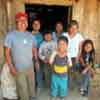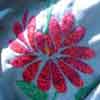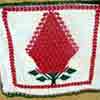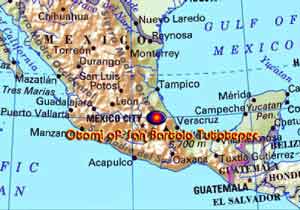 |
 |
 |
 |
|
|||||||||||||||||||||||||||||||||||||||||||||||||
|
This municipality is rapidly modernizing. There is a mix of mestizo and Otomi villages spread out over the mountain side. The panoramic view from these villages is wonderful and the condition of the dirt roads is good. Most of the village has only a remnant of traditional costume; however the women are skilled embroiderer and produce a variety of textiles for resale in local markets.
bob The Otomí, or Ñah-ñu, people who live in the mountains of the Sierra Madre Oriental in the central Mexican state of Hidalgo are part of a larger Otomí population known as the Eastern Otomí. Hidalgo is home to approximately half of Mexico's Otomí speaking people. Most Hidalgo Otomís live in the western part of the state, adjacent to the Otomí peoples of NE Mexico State and southern Querétaro State. Mexico's 1990 census found approximately 42,000 Eastern Otomí speakers in the isolated, mountainous region where the states of Veracruz, Hidalgo, and Puebla meet. There are three major regional dialects of N'uju or N'yuhu - the Eastern Otomí language. The Texcatepec Dialect is spoken in the sierra of Veracruz; the Huehuetla Dialect is spoken both in Hidalgo (the municipios of Huehuetla and San Bartolo) and in Veracruz; the Tenango Dialect is spoken in the Municipio of Tenango de Doria in Hidalgo and in neighboring Pahuatlán Municipio of Puebla. There are also Otomí communities in the Municipios of Tulancingo and Acaxochitlán in eastern Hidalgo. When anthropologist Frederick Starr visited this region in the late 19th century, he described "strange interminglings" of four different indigenous peoples: the Eastern Otomís, the highland Totonacs, the Tepehuas, and the Nahuas. Starr meant that different ethnic communities lived close by one another within small geographic areas. This is still true today in the Sierra Madre Oriental, and is the result of a 17th century Spanish policy of gathering small, scattered indigenous populations together "within the sound of the bell" to give colonial administrators and missionaries better access to, and control of, the native peoples. Eastern Otomís are agriculturalists who grow the traditional Mexican subsistence crops of maize, beans, and chiles. Many Otomís also cultivate the cash crops of coffee and sugar cane. In some communities farmers can grow citrus fruit, avocados, peanuts, and a wide variety of vegetables. Traditionally, animal husbandry has not played a major role in Eastern Otomí subsistence, though families often keep domestic fowl for household use. As is true in many Mexican indigenous communities, many people leave their villages to perform wage labor in the major cities, or migrate to work in the United States. Craft production plays a large part in the economies of several Eastern Otomí communities. Several villages in area of Tenango de Doria are well known for their colorful, decorative embroidered cloths, which range from bedspreads to small napkins. Decorative embroideries and finely embroidered clothing, mainly blouses, are produced in the Pahuatlán/San Pablito area. Papermaking is carried out in most homes in San Pablito. Paper is made from the bark of several different varieties of trees, including the "amate" (fig) tree, using technologies that originated in pre-Hispanic times. This paper is generically called "amate" paper. A large amount of this bark paper is sold to Nahua artists from the Río Balsas region of Guerrero State who use the paper in their colorful, naïve paintings, which are sold all over Mexico. Bark paper is also used to produce the cut paper figures known as "dahi" which represent many of the spirits, or life essences, that still play important parts in traditional Eastern Otomi religion. At least five villages in the Pahuatlán region also use glass "seed" beads to decorate clothing and to make jewelry, small bags, and other decorative items. The traditional male costume of white "manta" shirt and pants has largely vanished for daily use in the Eastern Otomí area, but may still be worn on ceremonial occasions. Many girls and women still wear traditional attire, however. This consists of an embroidered blouse, wrap skirt, woven sash, and quechquémitl. The quechquémitls of San Pablito, Pahuatlán are especially well known for their dense and beautiful embroidery.
|
||||||||||||||||||||||||||||||||||||||||||||||||
|
|||||||||||||||||||||||||||||||||||||||||||||||||






